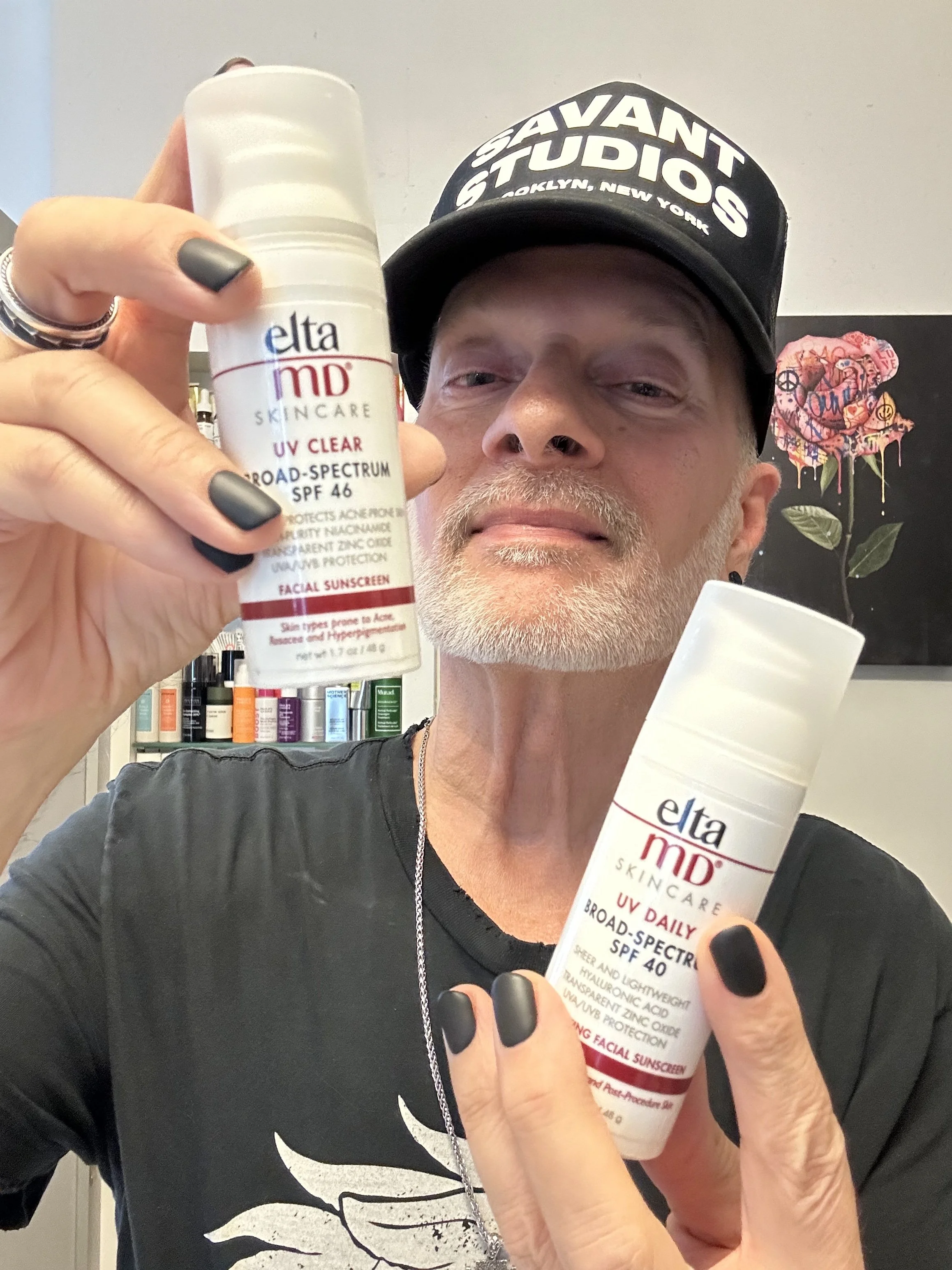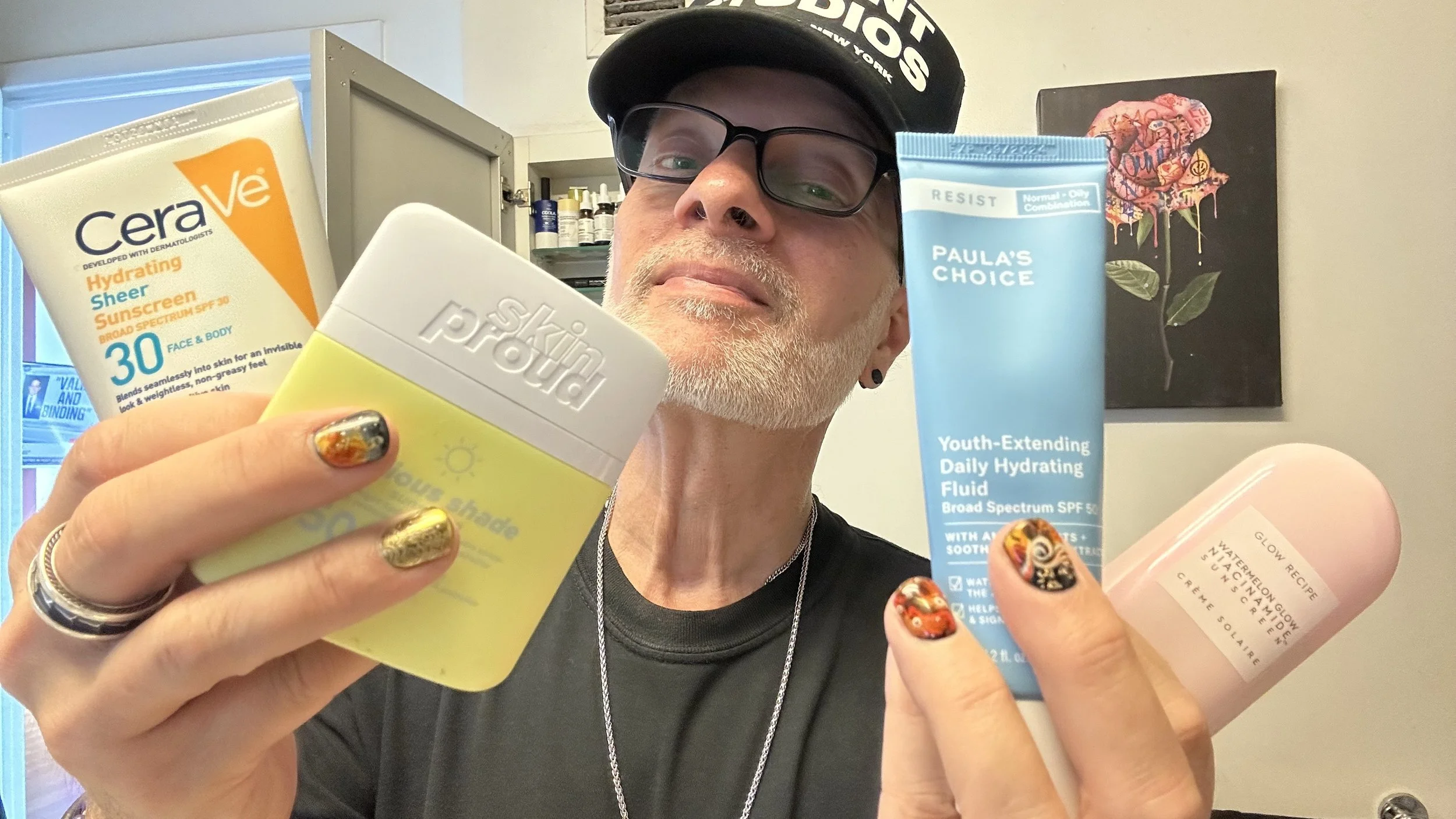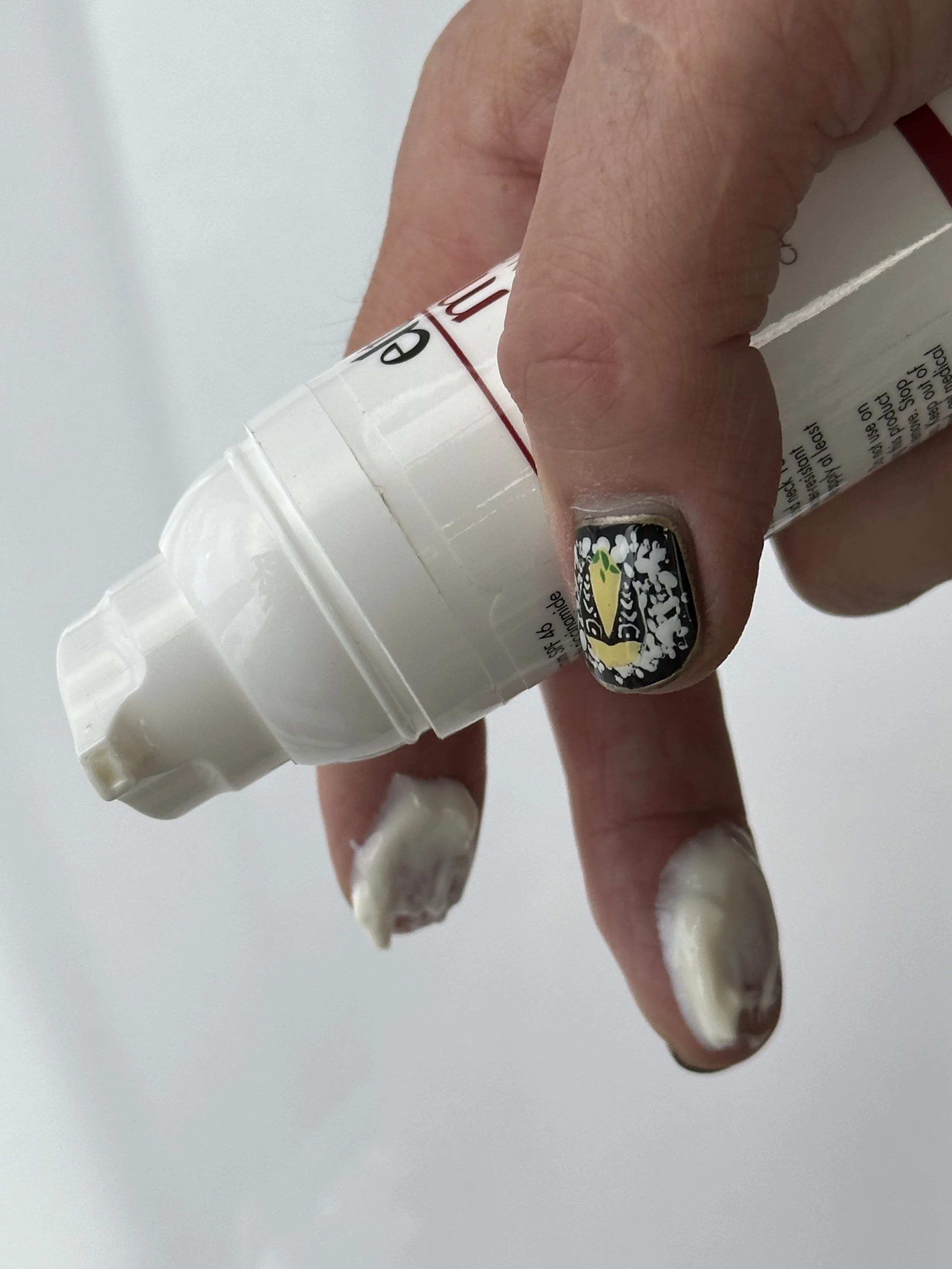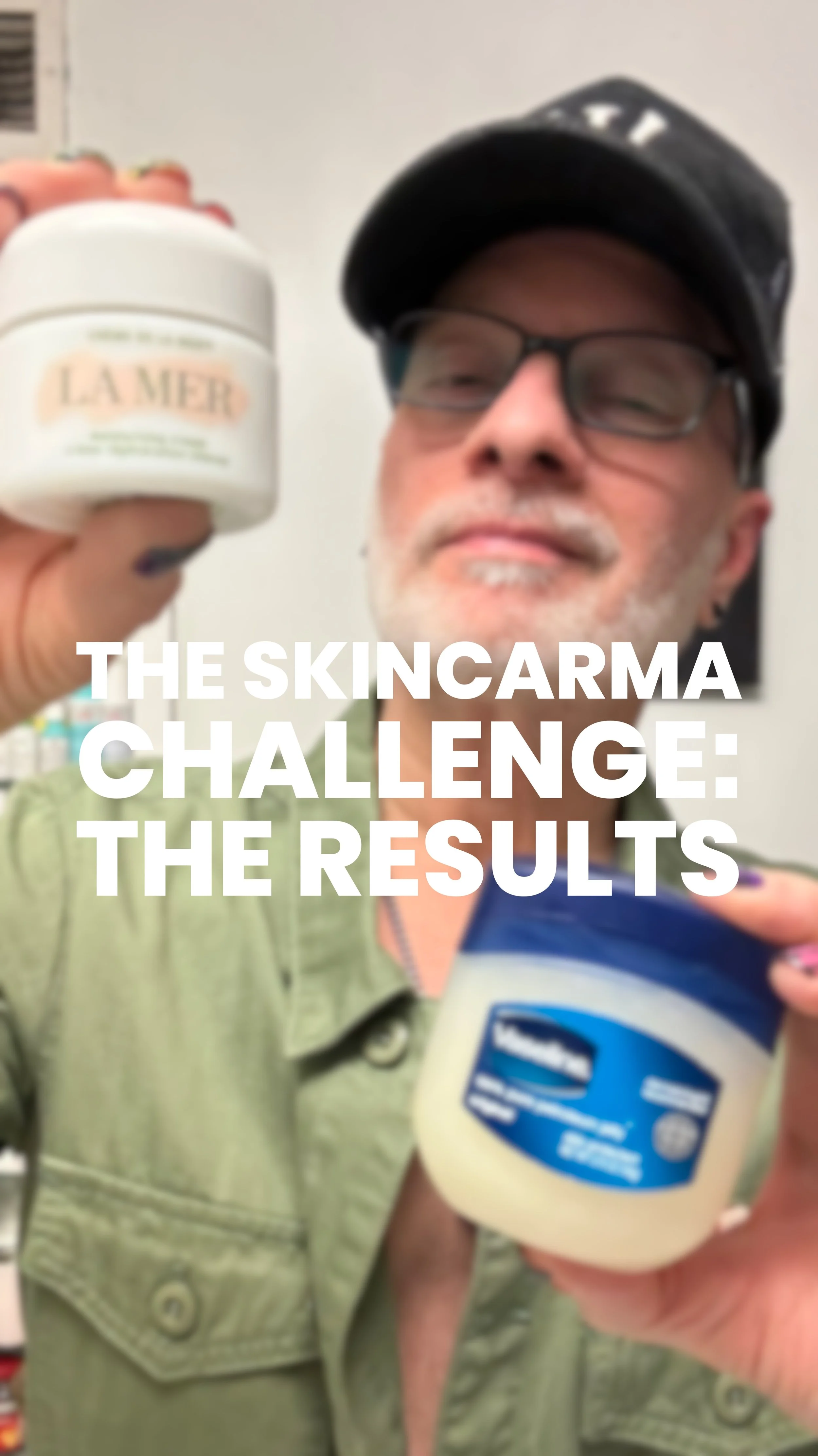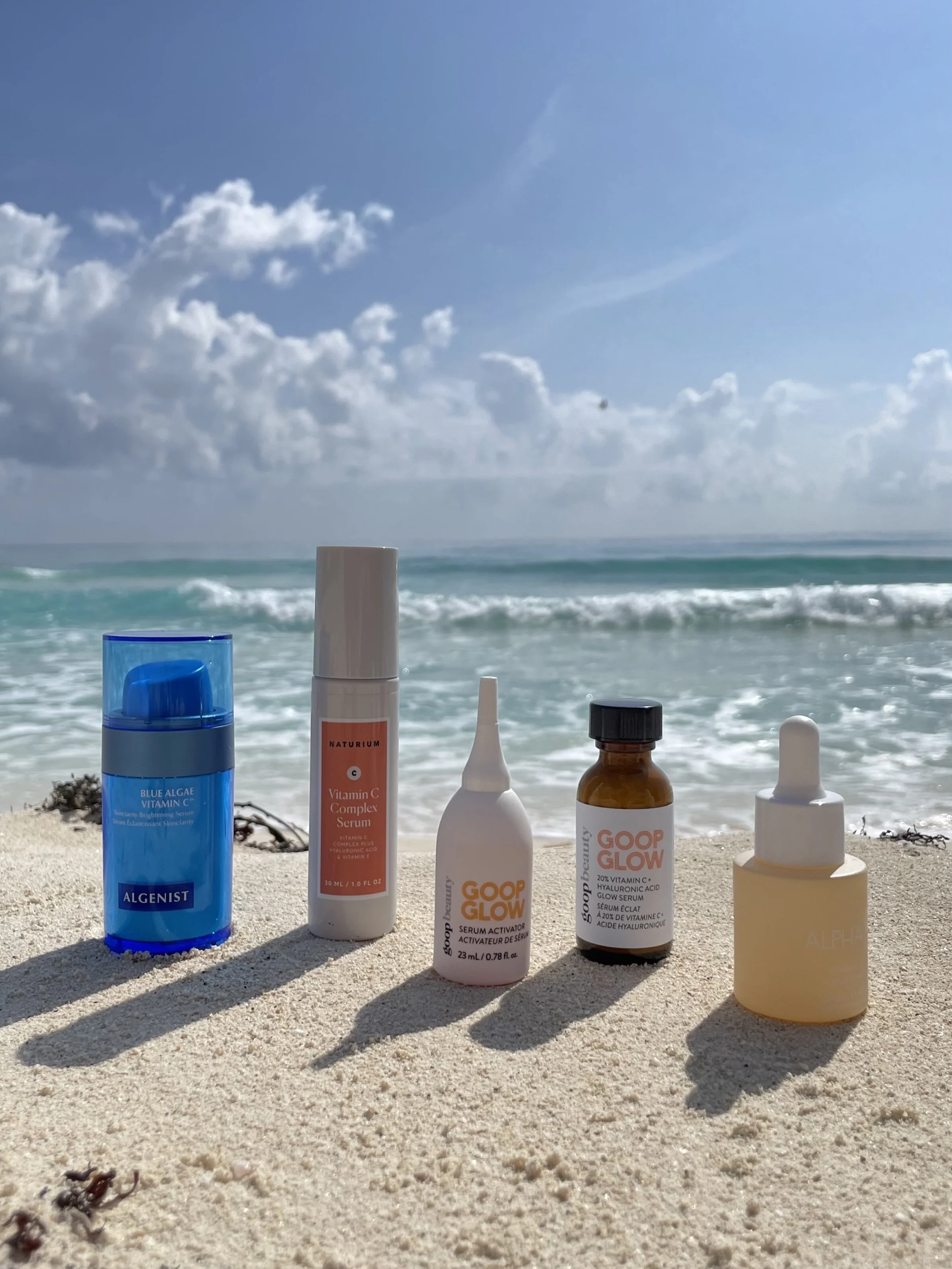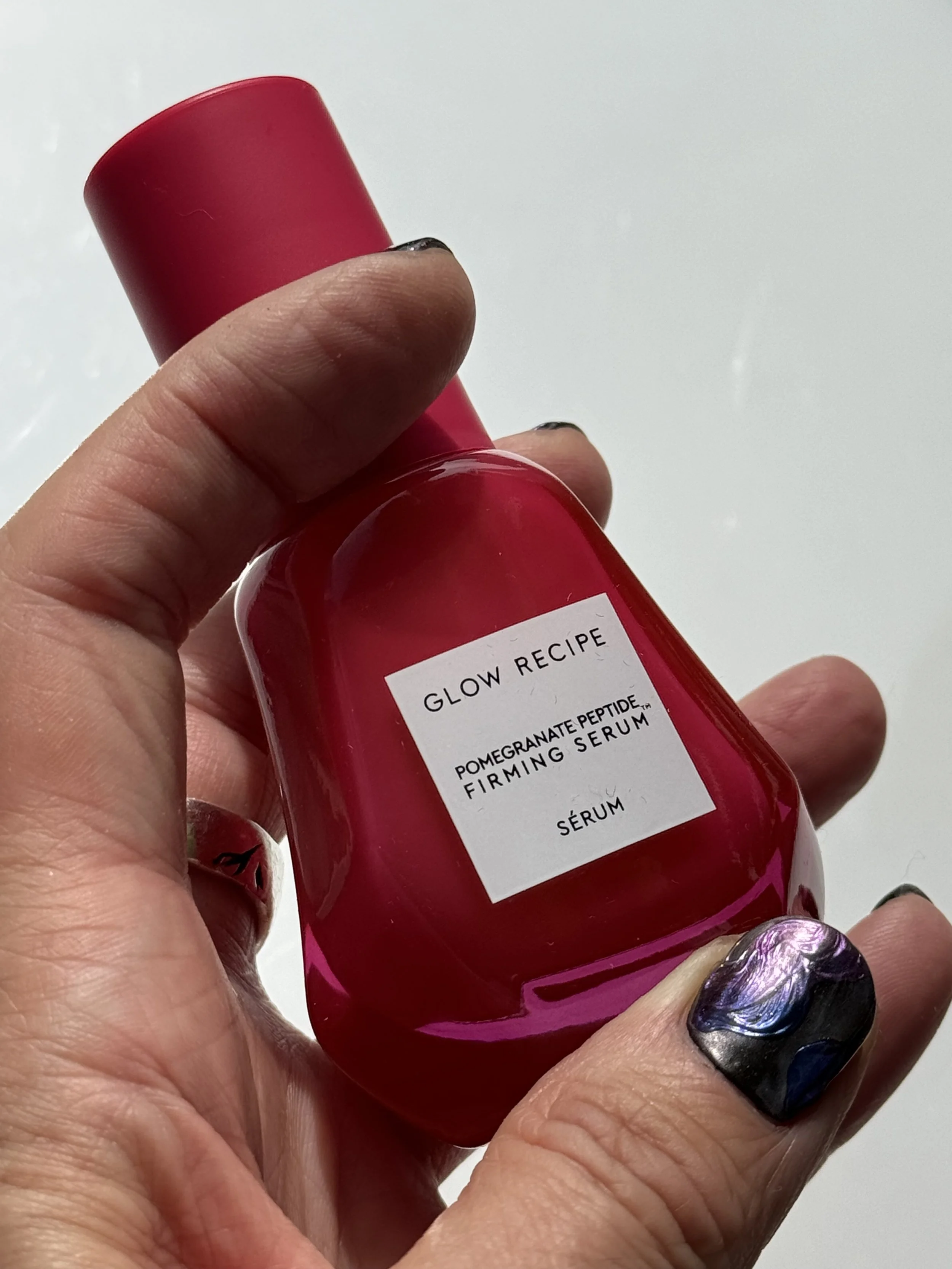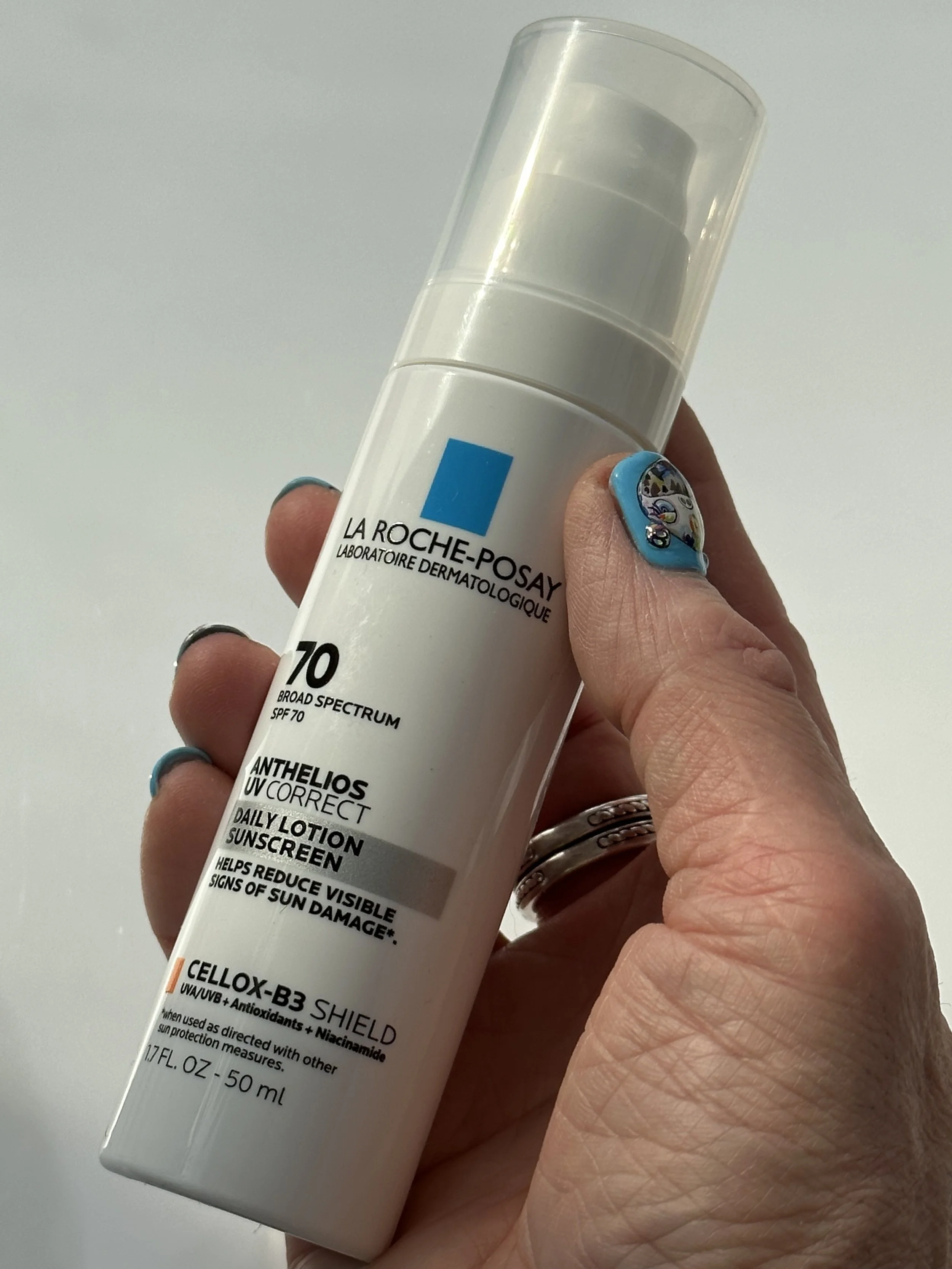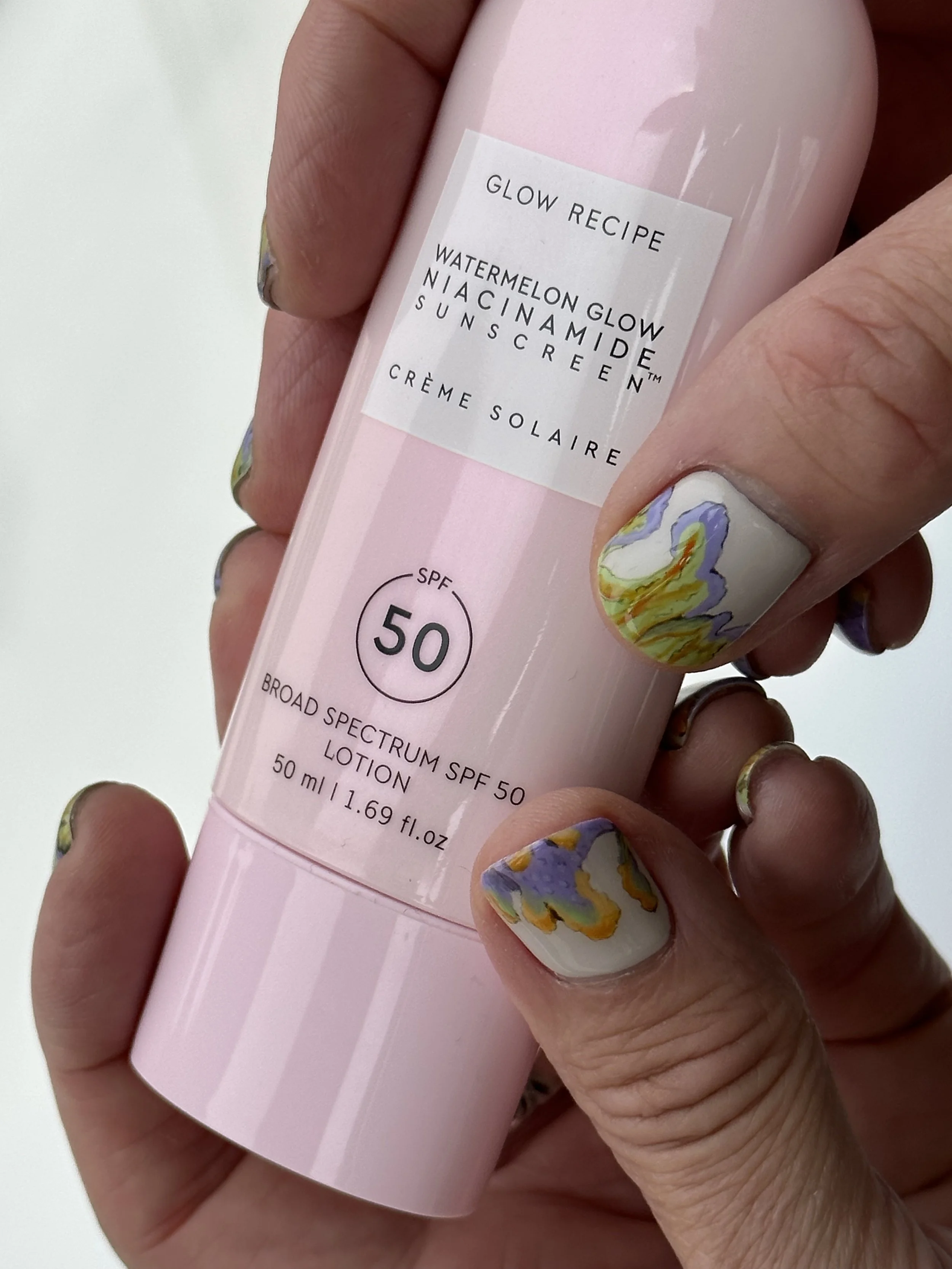PRODUCT REVIEW: ELTA MD UV CLEAR BROAD-SPECTRUM SPF 46 FACE SUNSCREEN - What is photoaging? Can photoaging be cured? Does sunscreen help photoaging?
ELTA MD UV CLEAR BROAD-SPECTRUM SPF 46 SUNSCREEN
I have never been as obsessed with sunscreen as I have been this past year. I don’t mean to imply that I haven’t been using a facial sunscreen religiously until now.
In fact, I never skip sunscreen (which includes in my immediate eye area!) – even on cloudy, seemingly sunless days.
But this year, there’s really been a boost in sunscreen textures. Which is a welcome change considering how unpleasant facial sunscreens have traditionally been – particularly products from US-based brands.
Over the past several months, I’ve discovered some remarkable new facial sunscreen products – some of the best sunscreens for face that I’ve come across in my twenty five years in beauty.
Last month, I posted about the BYOMA Moisturizing Gel Cream SPF 30 whose texture is so elegant I question whether it’s even a sunscreen! Catch it in action in my TikTok post here.
And over the summer, I really enjoyed both the Paula’s Choice Youth-Extending Daily Hydrating Fluid SPF 50 Sunscreen and new CeraVe’s Hydrating Sheer Sunscreen SPF 30 for Face and Body – both so lightweight you’ll forget you even applied sunscreen.
It was the Pavīse Dynamic Age Defense SPF 30 Mineral Sunscreen that really blew my mind, though. It’s made with breakthrough mineral sun filter technology invented by MIT scientists! Catch my review of it on the blog here.
Given all of my passion for sunscreen, it’s kind of wild that I’d never tried anything from EltaMD – one of the leading luxury suncare brands. So I was excited to try one of the brand’s bestsellers – the EltaMD UV Clear Broad-Spectrum SPF 46 Sunscreen. More on this popular facial sunscreen below.
THE BEST SUNSCREENS FOR FACE
The importance of a facial sunscreen cannot be overstated. And I take every opportunity to express the need to wear one ever morning, no matter what’s going on outside your windows. Just this morning, a follower hit me up to ask my advice on the application order for a list of about 8 skincare products.
Her routine included a facial cleanser, exfoliating BHA toner, anti-aging peptide serum, and even the Paula’s Choice 10% Niacinamide Booster – which I consider the best anti-aging serum with Niacinamide on Earth.
But there was one product missing from her extensive routine: a facial sunscreen. In my response, I shared my thoughts on application order and which products she should use in the AM vs. PM. But I also let her know that all the great skincare in her routine couldn’t keep up with the photoaging from unprotected sun exposure that she was susceptible to if she wasn’t actually wearing sunscreen.
Which begs the question: Do you really need to wear sunscreen everyday?
Yes, but don’t take my word for it. According to The Skin Cancer Foundation, up to 90% of the signs of aging is due to sun damage. Ninety percent! You can literally prevent nearly all signs of aging from sun damage (also known as photoaging) with a single product. And it’s not a $200 for a jar of Crème de la Mer Moisturizing Cream. Or Dr. Barbara Sturm’s Super Anti-Aging Face Cream – a $360 jar of nonsense. It’s a daily facial sunscreen!
“Responsible for 90 percent of visible changes to the skin, photoaging is a direct result of cumulative sun damage you’ve been exposed to throughout your life.”
So my next question is why don’t people wear sunscreen religiously?
According to the National Cancer Institute at the NIH, only “about 30 percent of women and less than 15 percent of men regularly use sunscreen on both the face and other exposed areas of skin.”
There’s no question that facial sunscreen prevents skin cancer and doubles as the best anti-aging cream in your entire skincare routine. But the answer to the question of why don’t people wear sunscreen is kind of wild to me. It’s not because they’re lazy, or that they don’t care that a daily sunscreen prevents skin cancer and photoaging.
In numerous studies, consumers express their displeasure with how sunscreen looks and feels on their skin. Despite knowing the dangers of unprotected sun exposure, uncomfortable product textures deter the overwhelming majority of people from wearing a sunscreen every day. Which is why I think new facial sunscreens that feel great on the skin is a significant development in beauty.
CATCH MY FAVE SPF OF THE YEAR IN ACTION!
Before I get into my detailed EltaMD UV Clear Broad-Spectrum SPF 46 Sunscreen product review just below, I wanted to explore some of the most frequently asked questions about sun damage and subsequent photoaging…
1. What is photoaging?
Photoaging is the clinical description for the premature skin aging that occurs as a result of sun damage. Specifically, photoaging is caused by long-term exposure to ultraviolet (UV) radiation from the sun.
It is characterized by some of the most visible signs of aging, including wrinkles, fine lines, uneven pigmentation, and a loss of elasticity in the skin due to a breakdown of collagen. If you have a concern for any of these signs of aging, you can bet they were caused by sun damage. In fact, according to The Skin Cancer Foundation, up to 90% of the signs of aging is due to photoaging resulting from sun damage.
Unlike natural aging, photoaging is primarily a result of cumulative sun damage that begins in childhood. Throughout your lifetime, UV radiation penetrates your skin and triggers a series of harmful effects, such as the breakdown of collagen and elastin fibers, the formation of free radicals, and the activation of enzymes that degrade your skin’s structural components. All of these processes contribute to the formation of wrinkles, the appearance of age spots and other forms of hyperpigmentation, rough skin texture and a thinning of the skin barrier.
Photoaging can occur on any area of the body exposed to the sun, notably your face, neck, hands and arms.
Explore my picks of the best facial sunscreens on the blog here.
Sources: WebMD: Can You Reverse Sun Damage?; NIH, National Library of Medicine, PubMed: UV Radiation and the Skin; Johns Hopkins Medicine: Sun Safety.
2. Can photoaging be cured?
Photoaging is a broad classification that encompasses the cumulative effects of sun damage, or photodamage, over the course of your lifetime. The signs of this damage on the skin are numerous. Among the most common signs of photoaging are surface wrinkles, fine lines, uneven pigmentation, dark spots, rough skin texture, and a loss of elasticity and firmness due to a breakdown of collagen.
There is no “cure,” per se for photoaging broadly. However, you can prevent further signs of photoaging and correct some of the damage once it’s become visible.
How to prevent photoaging:
Wear a sunscreen every morning: The most effective way to prevent photoaging and further signs of skin aging is to protect your skin from UV radiation. Wear a facial sunscreen every morning with at minimum an SPF 30. Even on cloudy, seemingly sunless days, UV radiation will reach your skin and potentially contribute to additional photodamage. Explore my picks of the best facial sunscreens on the blog here.
Add antioxidants to your routine: Antioxidants such as Vitamin C, Niacinamide, Resveratrol and Ferulic Acid help neutralize free radicals generated by UV radiation, reducing oxidative stress on the skin. Think of antioxidants as a complement to sunscreen; the two combine to help mitigate the effects of photoaging. Explore my picks of the best Niacinamide serums on the blog here.
How to correct photoaging:
Use a Retinol face cream or retinoid serum: Topical retinoids are among the best anti-aging ingredients available in skincare. Retinoids like Retinol, Tretinoin, and Adapalene are highly effective at improving the appearance of photoaging. They can help stimulate collagen production, reduce the look of surface lines and wrinkles, and even out skin tone. Explore my picks of the best Retinol creams and serums on the blog here.
Use a chemical peel once a week: A good habit for correcting signs of photoaging like dark spots is to incorporate a potent chemical peel with AHAs like Glycolic Acid into your routine once a week. (Selfcare Sunday is the perfect day to do an acid peel!) The best Glycolic Acid treatments can help to stimulate cell turnover and even out rough skin texture. They can also help to stimulate collagen production to counteract the collagen degradation that results from exposure to UV radiation.
Use a Vitamin C serum: Vitamin C possesses powerful antioxidant defense against free radical damage and oxidative stress. But its broader benefits for the skin cannot be overstated. A potent 10% Vitamin C serum or higher helps to brighten and even out skin tone, and fade dark spots and other forms of hyperpigmentation. Most importantly, regular use of Vitamin C helps to stimulate collagen production to both reverse and prevent signs of photoaging. Explore my picks of the best Vitamin C serums on the blog here.
Sources: WebMD: Can You Reverse Sun Damage?; Cleveland Clinic: Sun-damaged Skin (Photoaging); Journal of Clinical and Aesthetic Dermatology: Chemical Peels in the Treatment of Photoaging.
3. Does sunscreen help photoaging?
Yes, sunscreen is the most effective way to prevent and minimize the effects of photoaging. Caused by UV radiation, up to 90% of the visible signs of aging are the direct result of the cumulative sun damage you’re exposed to over the course of your life. Short of staying inside and away from windows, the only way to prevent sun damage and subsequent photoaging is to wear a facial sunscreen each and every day – even on cloudy, seemingly sunless days.
The American Academy of Dermatology recommends using a broad-spectrum sunscreen with an SPF 30 or higher to effectively shield your skin from the sun’s damaging UVA and UVB rays – the single cause of photoaging.
Explore my picks of the best facial sunscreens on the blog here.
Sources: American Academy of Dermatology: Sunscreen FAQ; Cleveland Clinic: Sun-damaged Skin: Photoaging, Signs, Causes & Treatment
4. What does photoaging look like?
Resulting from unprotected sun exposure, photoaging is characterized by some of the most common signs of skin aging. In fact, according to The Skin Cancer Foundation, sun damage is “responsible for 90 percent of visible changes to the skin” and subsequent photoaging “is a direct result of cumulative sun damage you’ve been exposed to throughout your life.”
Here are the most common indicators, both visible and invisible, of photoaging:
Fine lines and wrinkles: Unprotected sun exposure leads to collagen degradation and a breakdown of elastin fibers within the skin. As the skin collapses on itself, the loss of collagen and elasticity becomes apparent as wrinkles and lines on the skin’s surface. These typically form in the visible areas of the skin most frequently exposed to the sun, including the face, neck and backs of the hands.
Hyperpigmentation, dark spots and sun spots: Photoaging causes irregular pigmentation as the sun stimulates melanin in unprotected skin. This results in dark spots, sun spots and other pigment irregularities, all of which are classified as hyperpigmentation – one of the most difficult signs of photoaging to treat topically. Even the best brightening serums with Vitamin C and other potent actives may take a prolonged period of time before results are visible.
Rough skin texture: Photo-damaged skin may develop a rough and uneven texture due to the accumulation of dead skin cells and a decrease in the skin's ability to regenerate fresh, new skin cells effectively. Rough, uneven skin texture can result in a dull and lackluster complexion.
Loss of elasticity: In addition to chronological aging, UV radiation damages and degrades skin’s collagen and elastic content – essentially skin’s foundational support structure. This damage leads to a loss of elasticity and firmness in the skin and can contribute to sagging skin and the formation of surface wrinkles, jowls, drooping eyelids and loss of facial contours.
Telangiectasias (spider veins): Prolonged, unprotected sun exposure can cause the dilation of small blood vessels in the skin’s surface layer, resulting in the appearance of visible red or purple spider veins – a condition that is impossible to treat with topical skincare.
Explore my picks of the best facial sunscreens on the blog here.
Sources: Cleveland Clinic: Sun-damaged Skin: Photoaging, Signs, Causes & Treatment; American Academy of Dermatology: How Dermatologists Treat Sun-Damaged Skin; Dermatology Times: Combination therapies for photoaging: Dermatologists can customize combination therapies to treat sun-induced skin aging
5. Product Review
EltaMD UV Clear Broad-Spectrum SPF 46 Sunscreen Review
As I alluded to at the outset, I hadn’t experienced anything from EltaMD until very recently. The luxury suncare brand has certainly been on my radar, but it never seemed to inspire me enough to give it a try.
While it’s wildly popular, I think my EltaMD blindspot is the result of its tight distribution in the dermatologist channel in the US – something I don’t access much. I get facials regularly, but don’t have much need to see a derm. And thus my contact with the brand is minimized.
Since I really took an interest in facial sunscreen discoveries this year, I knew my immersion had to (finally!) include EltaMD. Of course, the best place to start an exploration of any brand is through its bestsellers. And the EltaMD UV Clear Broad-Spectrum SPF 46 Sunscreen appears to be their bestselling and best EltaMD facial sunscreen.
The first thing to know about EltaMD’s UV Clear Broad-Spectrum SPF 46 Sunscreen is that it’s a hybrid sunscreen – that is, it combines chemical and mineral filters to achieve its elevated UV protection. Specifically, it’s a blend of one of each type of sun filter: 9% Zinc Oxide and 7.5% Octinoxate.
The “clear” in the product name is clearly an indicator that the product leaves no white cast, and I can confirm that it does blend into my skin, with no residual film at all. It feels light on application and I have no sense that I have sunscreen on my face throughout the day. It’s quite a pleasure to use.
While nice, that’s not surprising. I would expect a pleasurable application from a best-selling sunscreen. There’s a reason people love it.
But what is surprising is how relatively unimpressive the formula is. In fact, it’s quite basic. Aside from an effective level of UV protection against sun damage and subsequent photoaging, there’s not much that is especially significant about the formula.
Sure, the antioxidant Niacinamide is great. According to the formula analysis site What’s In My Jar, it’s at between a 4%-6% concentration. I consider both antioxidants and sunscreen essential in my morning skincare routine and Niacinamide is one of the best antioxidants for protecting and preserving your skin health.
Combined with a high level of UV protection, the EltaMD UV Clear Broad-Spectrum SPF 46 Sunscreen delivers a solid defense against photoaging. As such, the fragrance-free hybrid sunscreen is effective at preventing signs of aging, including lines and wrinkles, dark spots and other forms of hyperpigmentation – as well as collagen degradation if used consistently and as directed.
There are small amounts of hydrating Sodium Hyaluronate – the salt form of Hyaluronic Acid that’s more compatible with skin – and exfoliating Lactic Acid. Both are likely to be at less than a 1% concentration. Notably, there are no moisturizing emollients, meaning it’s likely to be a good option for both oily skin and acne-prone skin.
The EltaMD UV Clear sunscreen is not among the best facial sunscreens that I’ve come across this year. But if you’re one of the vast majority of people who hate how sunscreen feels on your skin, you may find this one enjoyable enough to wear every day – even on cloudy, seemingly sunless days!
6. Pros & Cons
What I like about it: The EltaMD UV Clear Broad-Spectrum SPF 46 Sunscreen is a relatively basic facial sunscreen. I like the texture and how comfortable it feels on my skin throughout the day. I really appreciate the level of Niacinamide in the formula, which helps to deliver a well-rounded daily defense against photoaging. Because it’s fragrance free, it’s also a solid option for sensitive skin (fragrance sucks for all skins, in fact!).
What I don’t like about it: I wish it had more pro-skin health actives.
Who it’s for: All skin types, even sensitive skin, oily skin and acne-prone skin.
SHOP THE BLOG: Want to try it for yourself? Purchase the EltaMD UV Clear Broad-Spectrum SPF 46 Sunscreen for $41 here.
The Ingredient List of the ELTAMD UV Clear Broad-Spectrum SPF 46 Sunscreen:
 cci|sb|aacne|h, Octyldodecyl Neopentanoate emo, Hydroxyethyl Acrylate/Sodium Acryloyldimethyl Taurate Copolymer vc, Polyisobutene vc, Peg-7 Trimethylolpropane Coconut Ether emu|surf, Sodium Hyaluronate
cci|sb|aacne|h, Octyldodecyl Neopentanoate emo, Hydroxyethyl Acrylate/Sodium Acryloyldimethyl Taurate Copolymer vc, Polyisobutene vc, Peg-7 Trimethylolpropane Coconut Ether emu|surf, Sodium Hyaluronate  sii|h 0 0, Tocopheryl Acetate aox 0 0, Lactic Acid
sii|h 0 0, Tocopheryl Acetate aox 0 0, Lactic Acid  exf|h|buff, Oleth-3 Phosphate surf|emu 2 2, Phenoxyethanol pres, Butylene Glycol h|solv 0 1, Iodopropynyl Butylcarbamate pres, Triethoxycaprylylsilane
exf|h|buff, Oleth-3 Phosphate surf|emu 2 2, Phenoxyethanol pres, Butylene Glycol h|solv 0 1, Iodopropynyl Butylcarbamate pres, TriethoxycaprylylsilaneTHIS PAULA’S CHOICE SUNSCREEN IS EVERYTHING!
IS IT REALLY A SCAM?
Find out on my TikTok channel.
MY TOP VITAMIN C PICKS: VITAMIN C SERUMS I’M CRUSHING ON FROM ALGENIST, NATURIUM AND MORE
WATCH MY VIDEO REVIEW
THE BEST NIACINAMIDE SERUMS FOR CLOGGED PORES AND A BRIGHTER COMPLEXION
ON MY YOUTUBE CHANNEL HERE
WATCH MY VIDEO REVIEW OF
SKINCARE HACKS: GLYCOLIC ACID IS THE NATURAL DEODORANT THAT WORKS!
ON MY YOUTUBE CHANNEL HERE
WATCH MY VIDEO REVIEW OF
MY FAVORITE HUMECTANT SERUMS FROM PAULA'S CHOICE, THE INKEY LIST, GHOST DEMOCRACY AND MORE
ON MY YOUTUBE CHANNEL HERE
WATCH MY VIDEO REVIEW
COOL CLEAN FACIAL SUNSCREENS TO KEEP US SAFE AND SMILING IN THE SUN!
ON MY YOUTUBE CHANNEL HERE
WATCH MY VIDEO REVIEW
THE OPULUS BEAUTY LABS RETINOL SYSTEM – THE COOLEST RETINOL INNOVATION I’VE EVER SEEN
ON MY YOUTUBE CHANNEL HERE
WATCH MY VIDEO REVIEW
MY 2021 VITAMIN C PICKS + THE BEST VITAMIN C SERUMS TO BRIGHTEN UP THE COMPLEXION!
ON MY YOUTUBE CHANNEL HERE
WATCH MY VIDEO REVIEW OF
MY WINTER SKIN SAVIOR: SKINFIX BARRIER+ LIPID REPLENISHING SKINCARE
ON MY YOUTUBE CHANNEL HERE
WATCH MY VIDEO REVIEW
A COMPLETE K-BEAUTY ROUTINE WITH THE BEST FACIAL SKINCARE FROM PURITO, COSRX, MISSHA & MORE!
ON MY YOUTUBE CHANNEL HERE
WATCH MY VIDEO REVIEW
THE YEAR’S BEST VITAMIN C SERUMS WITH PAULA'S CHOICE, SUNDAY RILEY, THE INKEY LIST AND MORE!
ON MY YOUTUBE CHANNEL HERE
WATCH MY VIDEO REVIEW OF
A SELFCARE SUNDAY NOT FOR THE FAINT OF HEART – WITH THE PAULA’S CHOICE 25% AHA PEEL!
ON MY YOUTUBE CHANNEL HERE



